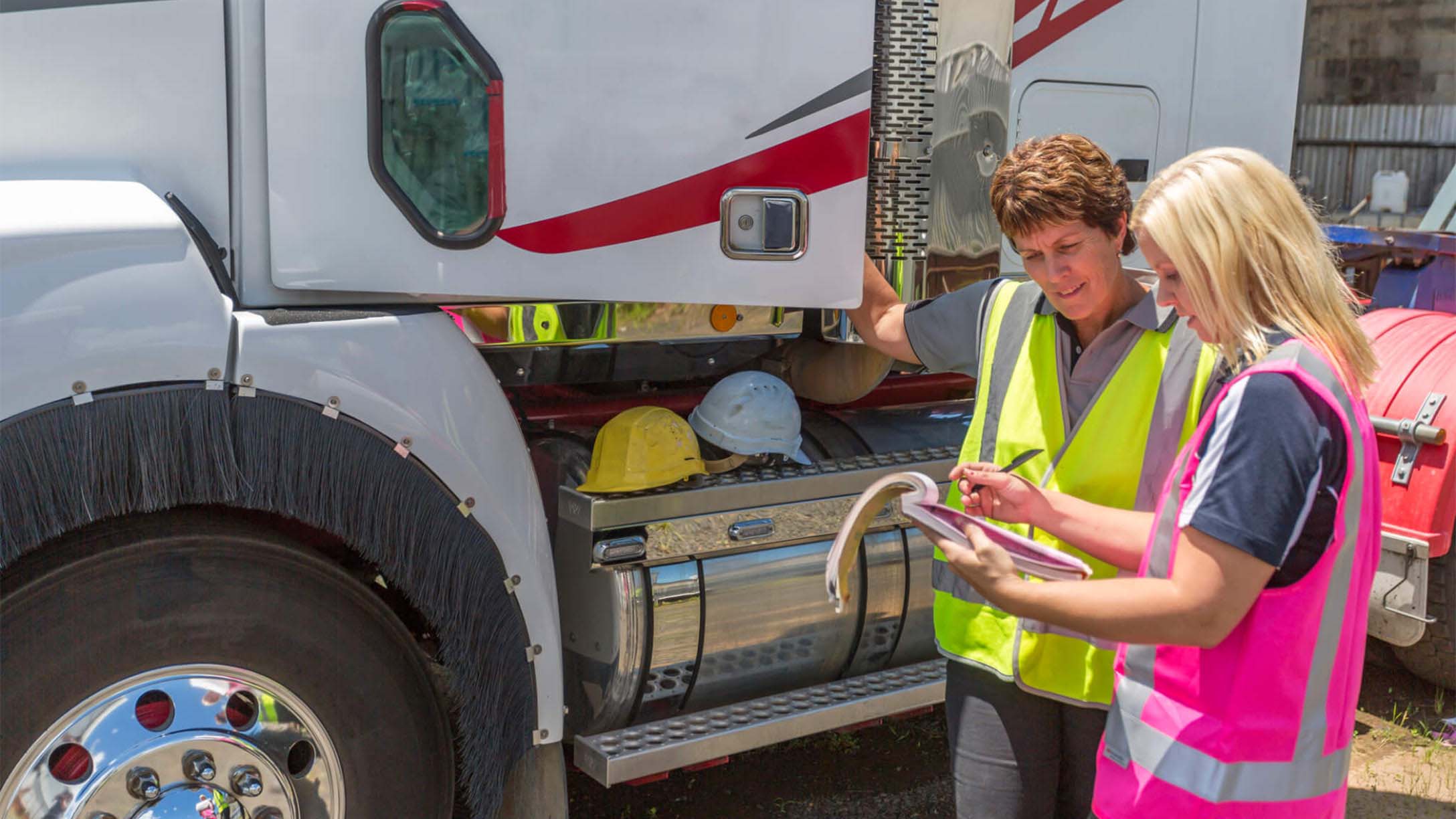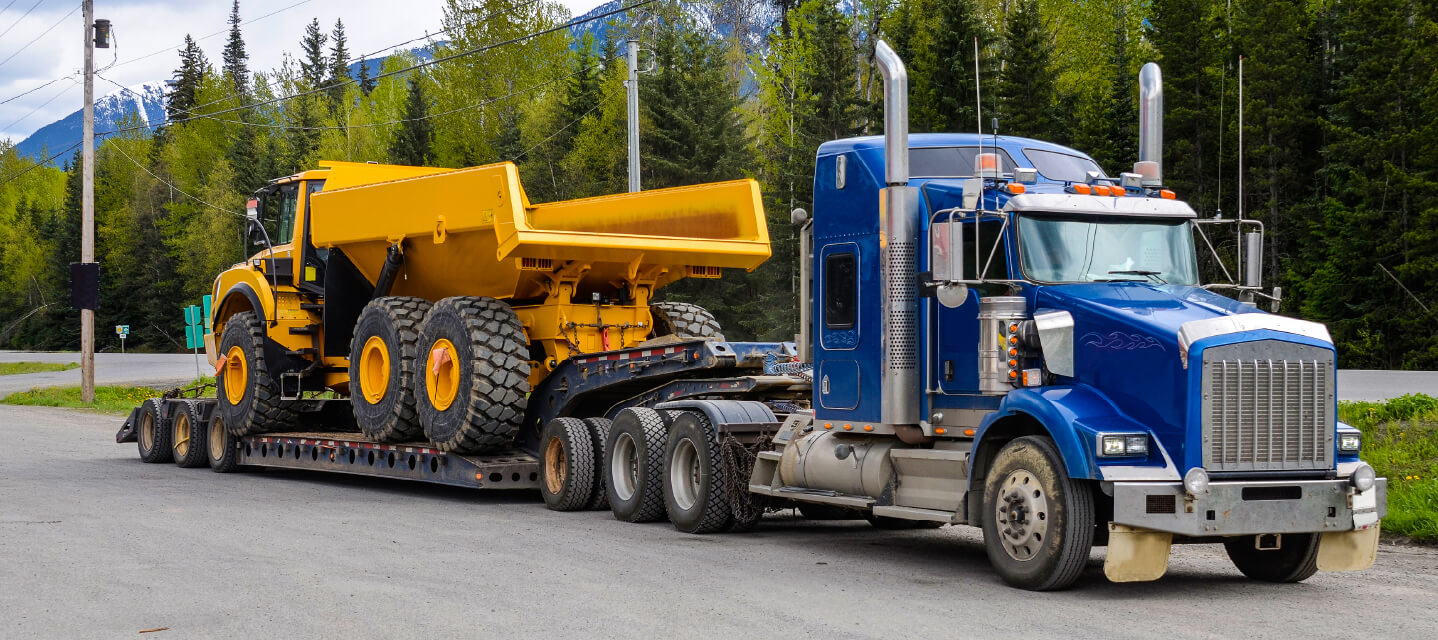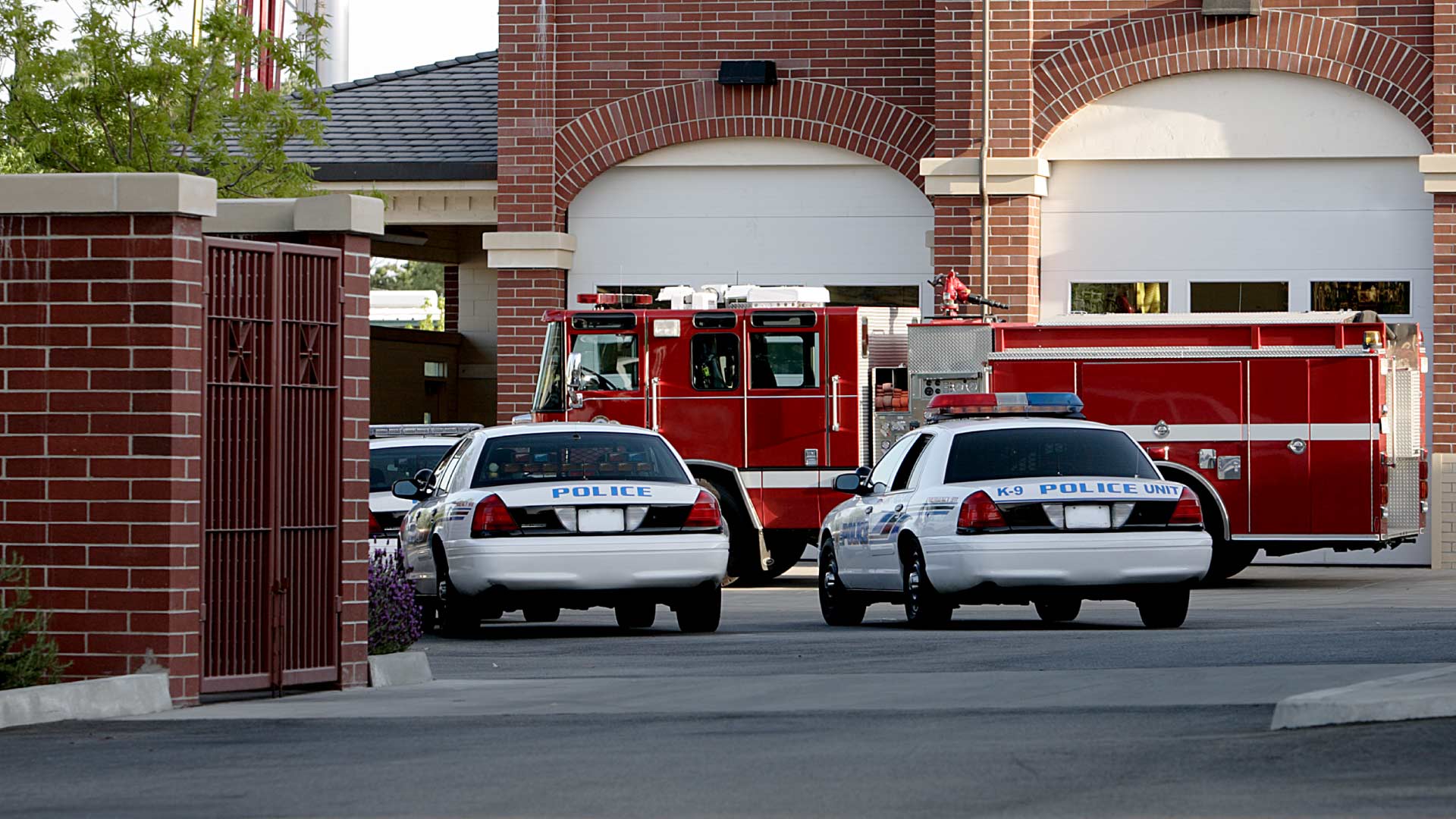Reversing the truck driver shortage
Four trucking industry experts discuss the truck driver shortage, women in trucking and recruiting more veterans.

The truck driver shortage sits atop the American Transportation Research Institute’s most recent list of Critical Issues In The Trucking Industry, and did so last year as well. According to Bob Costello, chief economist for the American Trucking Associations, the driver shortage could reach 175,000 by the year 2026.
Talk to most fleets and they will tell you that they could haul more freight if they only had more drivers. There does not seem to be one silver bullet answer for dealing with the shortage.
See also: Truck driver retention strategies: How telematics can help
Women in trucking discuss driver shortage
We asked four people from different parts of the trucking industry for their thoughts on the shortage and more specifically about how to attract more women and military veterans to the industry.
- Ellen Voie is president and CEO of Women in Trucking, a non-profit organization whose mission is to encourage the employment of women in the trucking industry.
- Kari Beeson is senior director of recruiting and retention as Transervice Logistics, a company that provides customized transportation solutions.
- Jenny Abernathy, is vice president of capacity development at CRST Expedited, on of the nation’s largest privately held transportation companies.
- Deb LaBree, an owner-operator with 12.5 years experience behind the wheel of a big rig including some time as a company driver.
Geotab: Why don’t we see more women entering the ranks of drivers?
Ellen Voie: The number one reason women don’t come into the industry is that they don't picture themselves in the industry. I think it is an image problem.
Geotab: What are some concrete things fleets can do to recruit more women?
Ellen Voie: It starts with recruiting ads. They really need to start to be more inclusive. It really is as simple as adding a photo of a woman in your recruiting ad. Some of it is subliminal, but studies have shown that if you don’t see yourself reflected in ad your mind may tell you, ”Oh this isn’t for me” or “I don’t belong here” or “I can’t do this.” Look at your facilities. Are they welcoming to women? Often it is the little things, like making sure company uniform shirts are ordered in women’s sizes that can make women feel wanted.
Deb LaBree: The size of the truck can be quite intimidating for a lot of women the first time they see it. They need to be encouraged to jump in one and check it out, perhaps sit in the jump seat and go for a ride. It sparks interest and excitement when people get inside a truck and see how it is laid out and notice things like refrigerators and microwaves.
Jenny Abernathy: We have to provide women with the resources to let them know that this is an industry they can be successful in. At CRST, we have well above the industry average for female drivers. I think a lot of that can be attributed to the fact that we assist them in getting through the CDL process and showing them the way. I think women want to feel confident when they take risks more so than men. Women want to feel comfortable and confident that they will be successful. We show them they are not alone through the process of getting a CDL and getting training. We let them know we will be there for them every step of the way.
Geotab: What role does money play in recruiting women?
Deb LaBree: I always say, “The steering wheel does not know gender.” That is the truth of the matter. What is great about this industry is I used to get paid the same thing as my husband got paid when we were with a carrier.
Ellen Voie: The number one reason women come into the industry is for money. They see the kind of wages that are posted in ads and that is a huge reasons they consider driving.
Jenny Abernathy: Money is one component, but I think it often gets misconstrued outside the industry that we should just raise driver pay. It also needs to be about how we as carriers can help drivers get the miles they need to really maximize their earnings. You can have a high cents per mile or a guaranteed minimum, but if they don’t earn any significant amount of miles on top of that it really limits their income. The other side is how we treat our drivers and how companies respect them and communicate with them.
Geotab: Recruiting women is only half the battle. The other half is retaining them. What can you tell us on the best ways to retain women drivers?
Ellen Voie: The number one reason women leave carriers is because of safety issues. This is about how well the equipment is maintained. Women drivers do not want to be on the side of the road waiting for service. Stay Metrics did a study that found that men leave trucking because they want more home time, but women leave because of a concern about safety. The average female driver is 50 years old and has already raised her children and typically a man in her life is in trucking so she already knows about the lifestyle. And women ask a lot of questions so I think they are better prepared when they come into the industry. Of course we need to work on getting younger women into the industry, but I think there are trucking jobs out there where a woman can get her kids on the bus, go to work and be home in time for soccer games.
Deb LaBree: We need to tell young women that truck driving is a great job for them. They can drive a truck and still take on-line classes and get an education. It sure beats being home working for a minimum wage when you could be out here.
Jenny Abernathy: I’ve talked briefly about communication and it is very important with driver retention. Who you communicate with every day and who your supervisor is certainly have a huge impact on whether a driver stays. It is their role to remove obstacles, get drivers the miles they need and communicate clearly what is going on. When well done it makes for an incredible relationship and when not well done it causes turn over. Since our drivers are out on the road and they are not face-to-face with us, the relationship is critical to both success and job satisfaction and in helping reduce turnover.
Ellen Voie: Women rate their relationship with their dispatchers as a higher priority than men. Women are collaborative and relationship-oriented so relationships are important to us. Women will actually leave a company much faster than a man if they feel that the dispatcher doesn’t have their backs. Conversely, they will stay much longer because of the relationship with the dispatcher.
Deb LaBree: In addition to safety and home time, women drivers want fleet managers to keep their word. If they say they are going to get a driver home, then they better keep their word.
Geotab: What role does the technology on the truck play in recruiting and retaining drivers?
Jenny Abernathy: It is complicated because a lot of drivers want to stick with the art of the drive and they are confident in their skill set. But for a lot of people coming into the industry they are used to technology on their cars and it is a nice complement to be able to have similar technology on the job. As drivers see technology in their personal lives, they certainly expect to see it in our trucks. In addition, things like collision mitigation systems and forward facing cameras help make them safer on the road.
Deb LaBree: Today it is vital to have technology on the trucks because young people have been raised with it. Electronics on trucks will give young drivers peace of mind and help them do their jobs more efficiently.
Kari Beeson: Technology can be tricky. I have had guys ask if we have cameras in our trucks because they are not going to work for a company that has cameras on the trucks. However, the younger generation likes technology and expects to find it on their trucks. I do have guys who love automated transmissions and the younger generation loves e-logs and they get excited about driving a brand new truck.
See also: How Autonomous Trucks Will Change the Trucking Industry
Recruiting veterans into trucking
Geotab: Let’s switch gears and talk about recruiting veterans. How do you suggest fleets go about doing that?
Kari Beeson: We participate in military job fairs at military installations. It is best to do those at posts that are geared to transportation. We can help them get their CDL license and the government will pay for that through their GI Bill benefits. At a previous job we helped veterans set themselves up as owner-operators and helped them set up their own businesses and do lease to purchase arrangements through the GI Bill.
Jenny Abernathy: We have efforts focused on our veterans. They have a lot of very positive attributes that you want in a driver, whether it is work ethic, the ability to handle stress or the ability to make decisions. We have employees who are veterans who we use as recruiters on site that help veterans transitioning out of the military navigate the GI Bill benefits. In addition to helping them leverage their GI Bill benefits, CRST offers some really great benefits for veterans including giving them credit for their time in the military and that helps elevate their earnings.
Geotab: How important are lifestyle issues to veterans coming into trucking?
Kari Beeson: I am finding that those transitioning out have been stabilized in the U.S. for a period of time and have set up some type of routine. And although they are used to being deployed, I am seeing a shift to them wanting to be home more often. Their thinking is “I have been gone from my family for so long, I would just like to be home more now.”
Geotab: How does your onboarding help you with driver retention?
Jenny Abernathy: We support driver training through our contract program. CRST has done an exceptional job of taking someone that is new to the industry — and we onboard thousands of new drivers every year — and providing them with the resources they need to be successful.
We help with a lot of expenses to support people who want to get into the industry but who may be struggling to do so. And we don’t put them into solo trucks. We run teams so there are always two people in the truck. That provides a stronger learning environment so that it becomes less of an overwhelming experience to begin driving. We are not the only ones to do that. More carriers say they want to hire students, but few of them are willing to help cover the cost, bring people on board and support them.
Kari Beeson: I have a system where I regularly communicate with drivers, especially during the first year when typically there is a lot of driver turnover. I have a list of 40 questions that I draw from and ask two to four at a time. When a driver gets their first paycheck, I call to confirm that they got the check and I ask them if everything is okay with it. I also ask them how orientation was and if their manager showed them around and introduced them to the staff. If they answer no, I am on the phone to the manager reminding them to do that. Then I might call them and ask them about their truck.
Trucks are becoming more important to drivers so I want to know if it was clean and met their standards. At the 60 to 90 day mark, I talk to them about health insurance and see if they were able to get set up with that. Periodically I ask them what made them join Transervice, what the still like about it and would they reapply to come on board again. As we get closer to the one-year mark I ask them if they’ve looked for a job in the past two months. I don't expect drivers to answer every question, but I ask them anyway. After that I make calls on their work anniversary and we send them postcards telling them how much they have contributed to the operation and we thank them for their service.
Conclusion
Clearly there is no one thing to do to attract drivers and no secret formula for retaining them. To be successful at finding and keeping drivers will take a variety of approaches and recognizing that different populations are motivated by different things and are attracted to a job for different reasons and will also leave for different reasons.
The best recruiting and retention strategy relies on recognizing and understanding those differences and tailoring your efforts to the needs of your current and potential drivers.
Sign up for the Geotab newsletter for more fleet news and best practices.
Related:
Taking a look at the truck parking challenge
Subscribe to get industry tips and insights
The Geotab Team write about company news.
Table of Contents
Subscribe to get industry tips and insights
Related posts

Ultimate heavy equipment transport guide: Top tips and systems for fleets
April 21, 2025
6 minute read

Ultimate field service management software guide [benefits + options]
April 21, 2025
5 minute read

Building a world-class driver training program: Essential strategies for truckload carriers
April 15, 2025
4 minute read

Marketplace Spotlight: From Chaos to Clarity, Innovating Fleet Claims with Xtract
April 15, 2025
1 minute read

Embracing public safety technologies in the face of opposition
April 15, 2025
4 minute read

What is government fleet management software and how is it used?
April 10, 2025
3 minute read